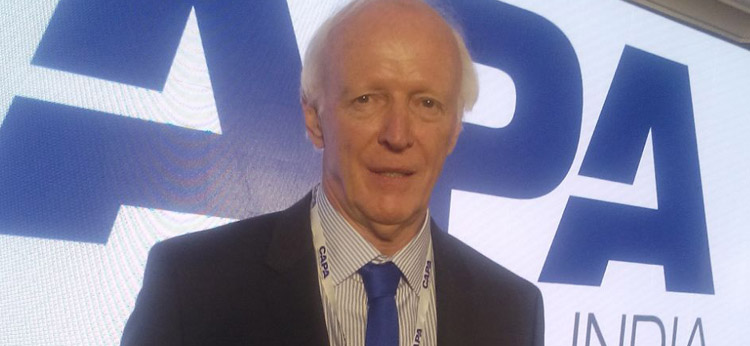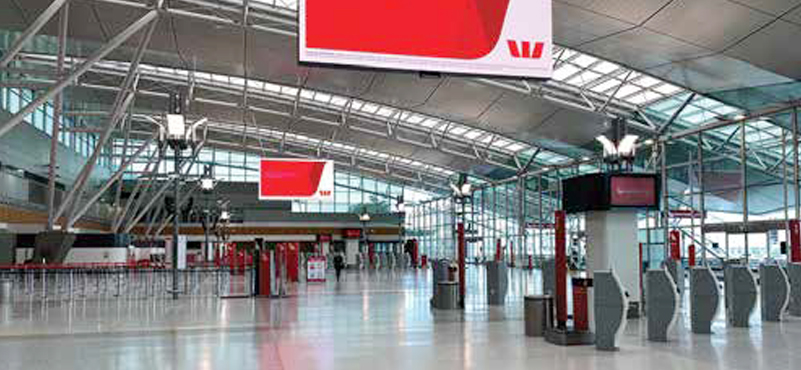Peter Harbison, Executive Chairman, CAPA made an extensive presentation at agency’s annual summit pointing out at the rise of Asian countries, including India, as the driving region for the global aviation business. Later in an exclusive conversation with TourismFirst, Harbison pointed out that stimulating intra-Asia traffic vis-à-vis new city pairs is a major opportunity. He also strongly spoke on the irritants in the Indian aviation policy environment. Edited excerpts:
 So you are fairly convinced that the global aviation equilibrium has finally tilted towards Asia?
So you are fairly convinced that the global aviation equilibrium has finally tilted towards Asia?
Yes, there is no denying the fact. The whole equilibrium of the global aviation business is now tilted towards Asia. You look at the number of airlines ordered which is a dramatic indicator. The orders from Asia countries wherein India has become a significant player is pretty much half of the total global order. If the well-established markets of Europe and North America are lagging behind in the order placement, that obviously means this region is growing more for the aviation business. Aviation is a serious business. If so much orders have been placed, the players must have done their homework.
And you think within Asia, this business will be largely driven by the LCCs?
Yes. But our own analysis points out that the segment which has not taken off in a major way here is the intra-Asian connectivity. It will not happen when you have four service providers, all focused on long haul, high quality products. It will be fuelled by local carriers who mostly fly the distance covered between one to four hours. In South East Asia, we are noticing this trend unfolding. The pointer is: 60 percent of all capacity is with the local players in the region. But other parts of Asia have to catch up with this trend. Indian carriers, for instance, have a share of only 20 percent in capacity for international operations. The short haul aircrafts have not been able to effectively link in to India. It is very important because the new aircraft types – A 320 NEO or Boeing 737 MAX which are much in demand – can effectively operate on three-four hours distance route. And you just need to look at permutations across the cities in Asia which have over a million population. China has got 120 cities of that size, India has got 50-60. So the potential of connecting them more robustly is limitless.
So are you in a way saying that the critical challenge for aviation players in a country like India would be to have a more robust city pair routing system? And not only within the domestic circuit but also in the neighbouring countries and the region.
Yes. But it should not be seen as a challenge but as an opportunity. The usual routes like Delhi-Singapore and Delhi-Kualalumpur are traditional routes now. Its other smaller routes which offer enormous opportunity. As I said there are so many cities in the region with one million plus population.
When we look at the case of India, the passenger growth is quite robust. But still it is playing out at seven-eight select locations. Airlines too seem to be disinterested in toying with the new routes. In your reckoning, what could be the reason?
To tell you the truth, this is something I have not been able to fully understand. The opportunities are clearly there. It’s combination of things – it could be partly due to airports. Airport charges are not too sympathetic towards airlines. Low cost carriers need easy facilities and quick turnaround facilitation. This domestic growth has also come in very quickly in India, scene has dramatically changed in just a matter of ten years. So an effective strategy has probably not been drawn. But we do have a lot of undergrowth traffic in the region. And I think the players will realise it sooner rather than later and work on the economics. They will understand the merit of city pairing which stimulate the traffic. Creating new city pairs is like creating new roads. Passenger will ultimately come.
On policy environment in India
Emphasis on regional connectivity in the draft policy…
Policy intervention on regional connectivity could be a positive move but it may also mean pushing airlines on routes which they do not find commercially viable. So you have to create an environment wherein the regional traffic is stimulated. If there are faster trains to reach to a particular location, developing air routes centered in that location may not be too viable. One of the problems you have in India is that the country has a good railways network. But the circumstances are there for regional connectivity promotion in a big way and what you need is a bit of encouragement from the government. And that entails making airports capable of expediting the processes for airline operations, making sure that the airport connections into the cities are much better than what they are.
Can any progressive regulatory regime have space for a provision like 5/20?
I am inclined to use strong words. It is so ironic that it has given the foreign airlines the real advantage by not having competition from Indian carriers. The government should have looked at Air India example of how you protect an airline and it does not improve and you have to keep subsidising it. These measures have no meaning in a growing market and it is in the interest of Indian aviation that it should be abolished.




































